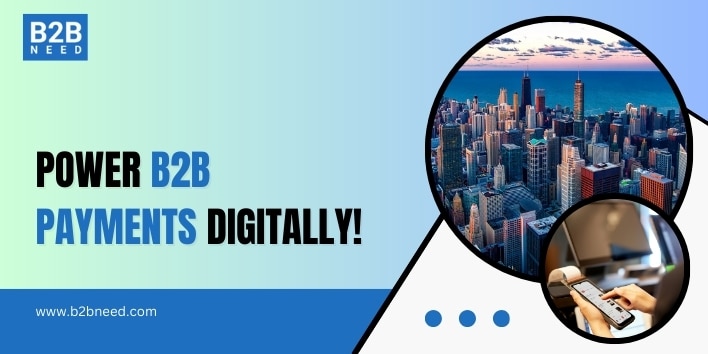Mercado Libre, the consumer e-commerce giant hot throughout Latin America, has announced the debut of a dedicated business-to-business (B2B) unit – a strategic jump that puts its heralded digital payment platform Mercado Pago at the center of an ambitious new growth push.
Executives say the initiative to change the way companies trade, pay and ship goods in and away from each other is the company’s most consequential evolution since its 1999 founding – one that is meant to transform how enterprises in 18 countries collaborate in an economy where most corporate deals are still conducted offline.
From Consumer Giant to a Contender for Enterprises
Often labelled “the Amazon of Latin America,” Mercado Libre went on to build a Latin American retail empire that had over 148 million active users.
Now it’s taking that hard-won infrastructure – marketplace technology, fintech and logistics – and aiming it at engine manufacturers, wholesalers and exporters.
“Latin American businesses deserve the same seamless digital commerce and digital payment platform experiences that consumers have enjoyed for years,” said Marcos Galperin, founder and CEO. “This new B2B unit will help unleash that potential.”
The unit, branded Mercado Libre Empresas, is rolling out first in Brazil, Mexico and Argentina, with other more markets scheduled through 2026.
Why the B2B Market Beckons
This pivot is considered to be of time.
Research firm IDC has estimated that there’s $2.5 trillion in annual B2B trade in Latin America – but less than 10 percent of it currently takes place on digital platforms.
Strong Potential for Expansion: “Mercado Libre is capturing an enormous opportunity,” said Forrester senior analyst Sofia Hernandez. For instance, “by extending its proven digital payment platform to corporate buyers and sellers, it can bring immediate trust, liquidity and speed to markets that are still dominated by paper invoices and cash.”
Mercado Pago: The Rockefeller of Finance
The gem of this strategy is Mercado Pago, the fintech branch of Mercado Libre, with a total payment volume exceeding $180 billion in 2024, a 70 percent year-over-year increase.
For the B2B launch, Mercado Pago is launching new capabilities at an enterprise level:
- Instant Settlement & Escrow for high-value trades
- AI-Driven Credit Lines that underwrite small and mid-size suppliers in minutes
- Multi-Currency & Cross-Border Support for regional trade
Mercado Libre, the fintech arm of Latin America’s largest e-commerce platform, said that its up-to-date digital payments platform already controls consumer adoption. “We’re now engineering it for complicated corporate invoicing, financing and compliance.”
Logistics: The Physical Supporter
B2B commerce requires more than just payments. Mercado Libre’s network of 1,800+ distribution centers and 1,800+ last-mile centres is unmatched in providing fulfilment coverage.
The company is layering on:
- Freight corridors for bulk shipments
- Real-time shipment dashboards for enterprise planning
- Customs-clearance support to accelerate cross-border deals
“For our industry, speed and reliability are absolute imperatives,” said Leandro Bass, VP of Mercado Envios. “Our network now already provides two-day delivery for heavy cargo in major metros – a novelty in the regional B2B trade.”
Competitive Landscape
Latin America is expected to see its B2B digital payments sector rise to $350 billion by 2028 at 18% CAGR, per Statista.
Rivals like Brazil’s Pag Seguro and Mexico’s Clip have enterprise offerings, but none have something as big as a marketplace coupled with a top-tier digital payment platform coupled with proprietary logistics.
“Mercado Libre offers the whole stack,” said Gabriel Mendez, Fintech analyst at JP Morgan. “Visiting those two models together is a moat strong.”
Early Customer Impact
Pilot participants are already seeing measurable results:
“Export invoices resolved in hours versus days,” says Mariana Costa, CFO of a Peruvian agricultural cooperative. “The escrow and the currency adjustment option incorporated into the payment platform caused a shift in our cash-flow planning.
“At Eduardo Silva, an auto parts supplier from Brazil, our team has one dashboard to track all of our payments and shipments,” Eduardo Silva, our client development director, shared. “The trans-border digital portal will be a game-changer for the regional trade.
Economic and Social Importance
Mercado Libre sees the expansion as leading to financial inclusion.
Through its integration of supplier payments and credit for businesses, it is looking to include small and mid-size businesses – many of whom have been traditionally dismissed from formal banking – in the digital economy.
Argentina’s Ministry of Production hailed the initiative for “the advance in export competitiveness and tax transparency throughout the continent”.
Challenges & Risk Management
Compliance, currencies, and cybersecurity: Challenges persist.
The company is addressing them with:
- AI-powered fraud detection for large B2B payments
- End-to-end encryption and independent audits
- Collaboration with regulators to harmonize compliance standards
And most of all, Galperin said, trust. “Our reputation as Latin America’s most reliable platform for making digital payments is based on relentless security.”
Strategic Roadmap
Looking towards the future, Mercado Libre’s plans include:
- Expand the B2B unit to all 18 markets by late 2026
- Launch industry-specific marketplaces for agriculture, healthcare, and automotive sectors
- Integrate trade-finance products directly into its digital payment platform
Analysts predict these moves might pre-emptively double Mercado Libre’s total addressable market in five years.
Key Takeaways
- Historic Pivot: Mercado Libre enters B2B commerce with a full-stack approach.
- Digital Payment Platform at Core: Mercado Pago drives secure, instant enterprise transactions.
- Massive Market: $2.5 trillion in annual B2B trade remains largely offline.
- Competitive Edge: Integrated marketplace, fintech, and logistics create a formidable barrier to entry.
About Mercado Libre
Mercado Libre is the largest e-commerce ecosystem in Latin America and operates marketplaces and provides logistics solutions in addition to the region’s leading digital payment platform, Mercado Pago, in 18 countries.

